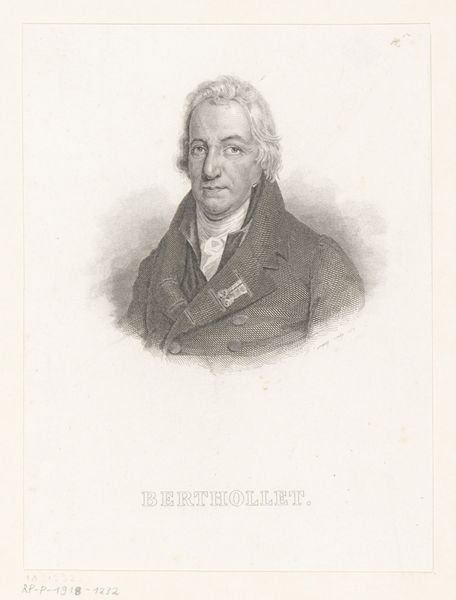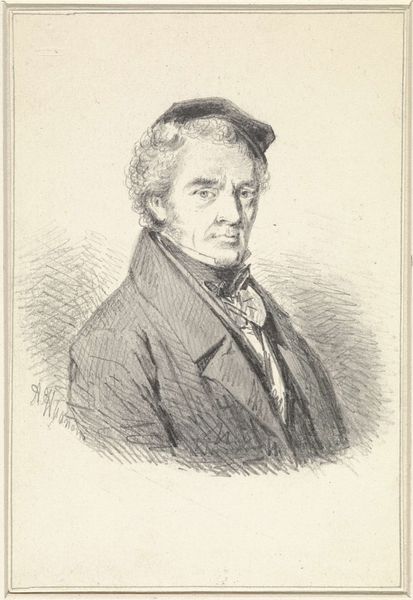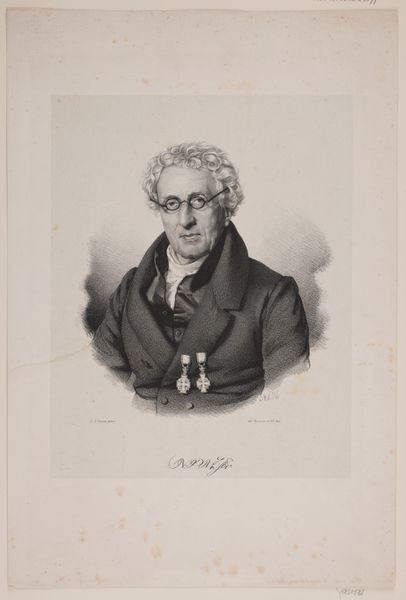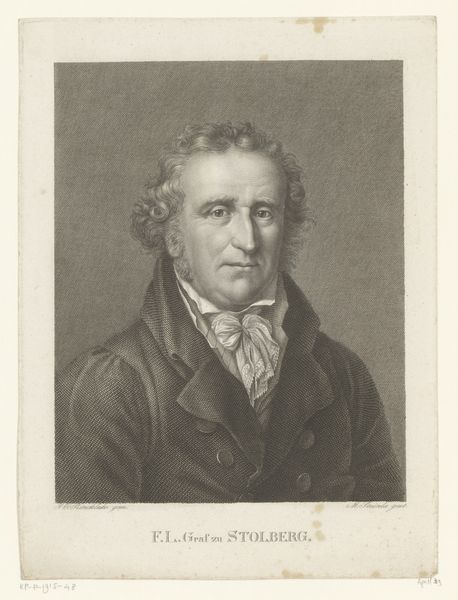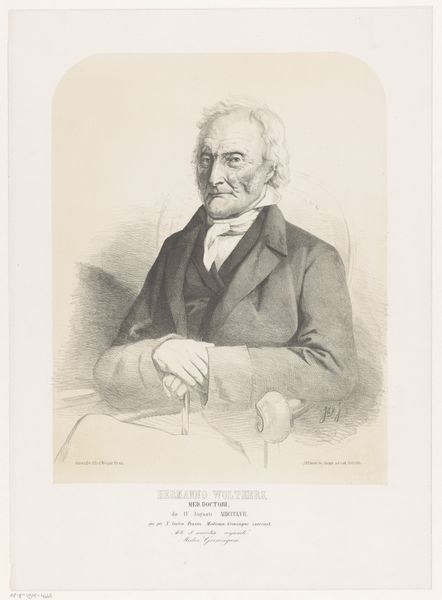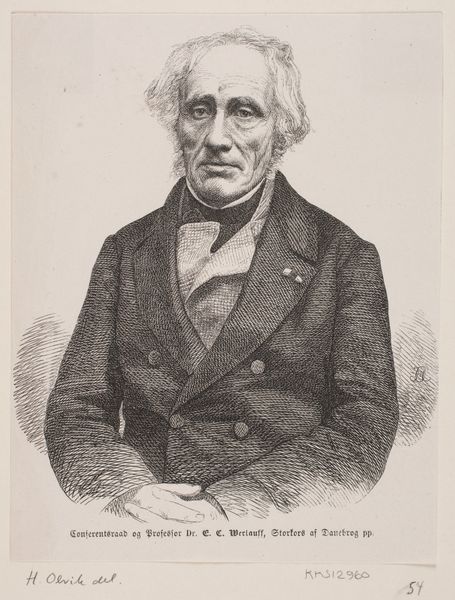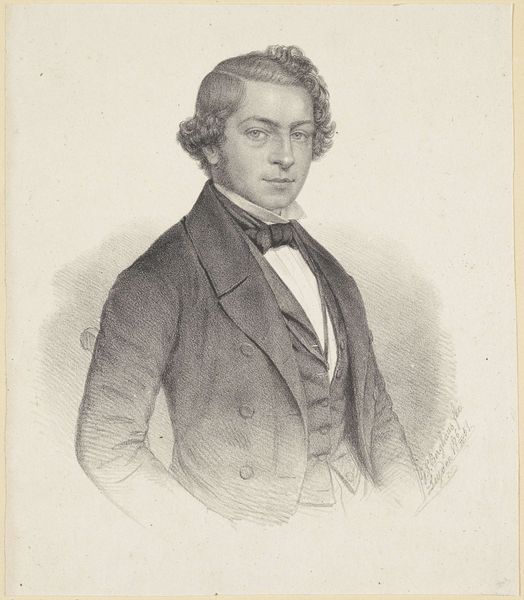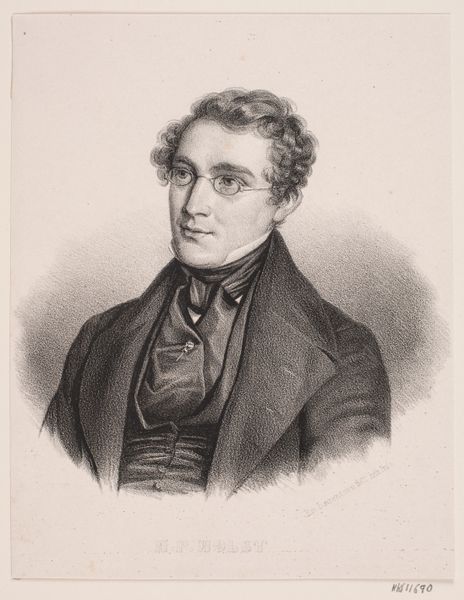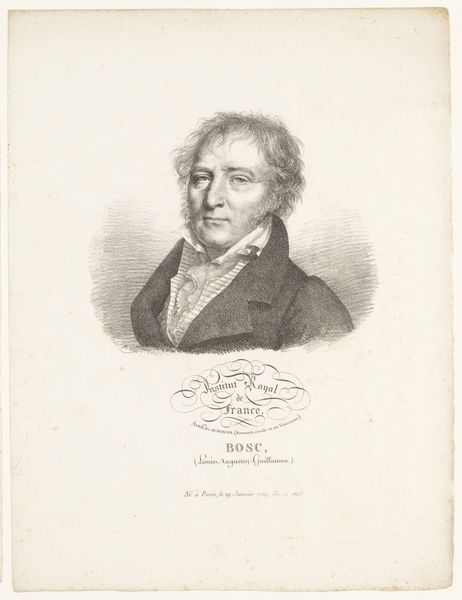
Dimensions: height 323 mm, width 270 mm
Copyright: Rijks Museum: Open Domain
Editor: So, this is a print titled *Portret van Jacob van Lennep*, dating roughly from 1847 to 1883, attributed to Adrianus Johannes Ehnle. It's a portrait, seemingly done in graphite or charcoal, and the overall tone is rather serious, wouldn't you say? How do you interpret this work? Curator: Observe the masterful deployment of chiaroscuro. The artist has used light and shadow not merely to depict form, but to sculpt a psychological landscape. Notice the contrast around the eyes, drawing us into the subject's inner world. The delicate hatching defines the texture of the coat, a sophisticated play between surface and depth. What does the asymmetry of the composition suggest to you? Editor: That's interesting. The asymmetry does give it a sense of immediacy, as if he was caught in a fleeting moment. It’s not static or posed in the conventional sense. So the artist used light and shadow for depth of emotion as much as realism. Curator: Precisely. And consider the graphic quality. While ostensibly a portrait, the work leans heavily on the abstract qualities inherent in line and tone. Note how the background dissolves, placing emphasis solely on the figure. Does this emphasis not transcend simple representation? Editor: I think so. The lack of context makes the face seem more…universal, maybe? The details in the face really stand out. The gaze especially has a certain intensity that is very Romantic in style, similar to other portraits of the time. Curator: Indeed, the interplay between the real and the ideal. It's an exercise in pure visual language, manipulating form to communicate more than just likeness. And that emphasis on form provides us with access to a powerful depiction of personality, and of humanity. Editor: I never considered the visual language in that way. Thinking about it as form and line makes it very impactful. Curator: Yes, it helps reveal meaning beyond the purely representational!
Comments
No comments
Be the first to comment and join the conversation on the ultimate creative platform.
